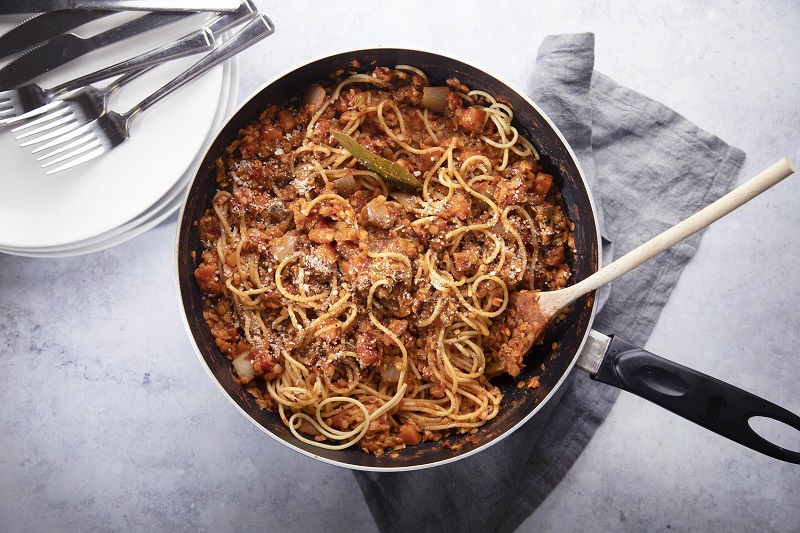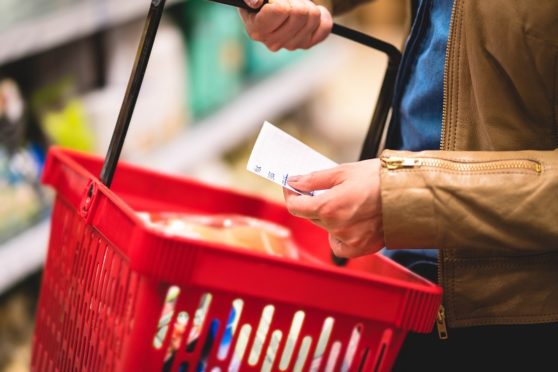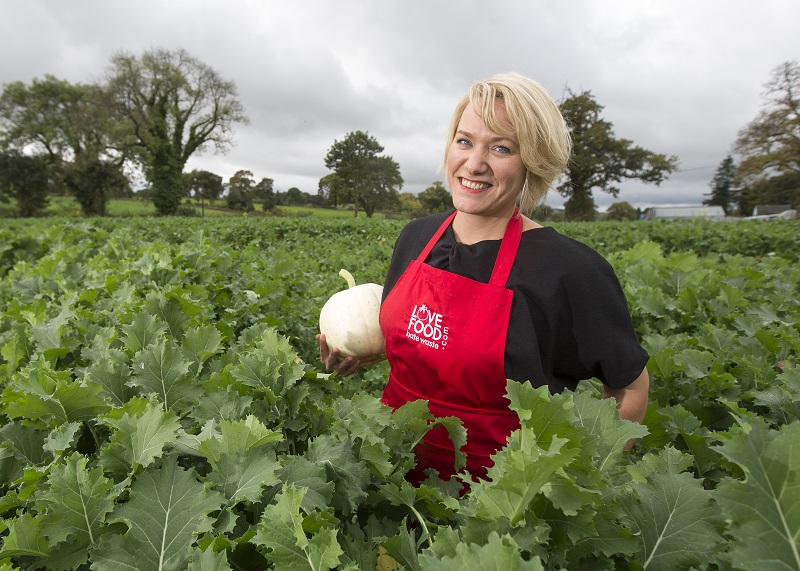If there is one thing the nationwide lockdown has taught us, it’s that more people like pasta than we might have thought.
But having been told only to leave the house to get essential items from the supermarket, many of us are looking at ways to make our groceries last for as long as possible to reduce waste and the spread of coronavirus as the same time.
Thankfully, there are several ways we can do this.
Ylva Haglund, food waste campaigns manager at Zero Waste Scotland, said: “Our number one tip for avoiding too many trips to the supermarket is to plan your meals.
“How many people are you going to be cooking for; what will you have for breakfast, lunch, dinner? What about snacks? Make a list,” she advised. “The list will help ensure you’ve got what you need and it will also likely save you money, if you stick to it.”
Store-cupboard staples, such as lentils, beans and pasta can really help us make our ingredients go further.
Ylva added: “People tend to already have the key ingredients at home needed to make things that can last a while and be enjoyed by the whole family, such as cake.”
Similarly, Dr Jon Wilkin, business development manager for Food Innovation at Abertay University, says we should aim to do just one weekly shop.
“It is really important to write a list of the types of foods you will be eating on a day-to-day basis, so you can buy everything you need in the one trip.
“There’s no need to go overboard with the shopping. Just make that list, make sure you stick to it and ensure you have everything you need for the week.”
According to the European Food Safety Authority, there is no evidence at present that COVID-19 can be transmitted through food consumption. However, it is still important to practice good food hygiene and try, where possible, to ensure we can keep the food that we do buy fresh for as long as possible and to help reduce waste.
So when it comes to the essentials, what can we do to maximise their shelf life?
“Storing food in the best place can really extend its life,” says Ylva, “make friends with your freezer during this time. The freezer acts like a stop button on our food so anything that is about to reach its use-by date, pop it in the freezer. There are very few things which cannot freeze.”
While it’s not a good idea to try to freeze eggs in their shells, Jon suggests keeping them in the fridge instead. “You can safely eat eggs outside of the best before date, but check them by floating them in water. If they sink they are fine to enjoy, if they float they may be off,” he advises.
“Eggs are best kept in the fridge,” agrees Ylva, “but make sure your fridge temperature is between three and five degrees. Often our fridges are too warm, which means food goes off quicker than it needs to, especially milk and other dairy products.”
“You can also freeze eggs if needed. Just crack them into a bag or container.”
Another essential that can live beyond its best-before date is bread. According to Love Food, Hate Waste’s A-Z of food storage, the kitchen cupboard is the best place to store bread, as long as it is a fairly cool, dark and dry place and that it is kept in its original packaging. It’s another food that can also be frozen.
“To make it easier to separate bread slices after freezing, bang your loaf gently on a work surface before you put it in the freezer. Slices can be defrosted as needed, or toasted straight from the freezer,” says Ylva.
Milk is another essential that many people may not know can also be frozen. For best results, it’s advisable to keep milk in the fridge. “Milk can be frozen, but it generally has a good shelf life,” says Jon. But if you don’t use milk that often, there are ways to make it last longer.
“Ice cube trays are good for freezing small amounts of milk for cups of tea and coffee, and can defrost as soon as they are popped in your hot drink,” says Ylva, so long as it’s frozen before its use-by date and larger quantities are consumed within 24 hours of being defrosted in the fridge.
Fruit and veg also have different storage requirements.
“Keep bananas in a cool, dry and dark place away from other fruit, as this will make it go brown faster. Once brown, throw them in the freezer to use for baking,” suggests Jon. “Store root veg in a cool, dry and dark place. Keep salad veg in the fridge, cut off any brown bits and the rest should be fine to eat. Broccoli and cauliflower can also be kept in the fridge.”
According to Zero Waste Scotland, in 2019 an estimated 987,890 tonnes of food and drink in Scotland was wasted, with the Scottish Government pledging to reduce all food waste in the country by 33% by 2025.
Jon says: “Hopefully, people are wasting less and using up all of their leftovers. I hope that can continue as Scotland wastes around (per year) 31,000 tonnes of milk, 25,000 tonnes of bread, 19,000 tonnes of potatoes and 14,000 tones of ready meals.
“This waste is simply wrong and needs to stop. The energy that goes into producing this amount of food is large and is contributing to climate change.”
And Ylva hopes the current lockdown will be an opportunity for people to change their habits around food waste. “It’s difficult to be sure of the outcome, and whether the lockdown will affect our eating habits in the long run and consequentially our waste habits. We hope the nation has a greater appreciation for food, for children to be involved in food prep and cooking, and for us to be more conscious of what we buy versus what we consume.”

Inspired to get into the kitchen? Why not try this recipe for lentil bolognese, courtesy of the team at Zero Waste Scotland.
Perfect for veggies (and vegans if you omit the cheese) this lentil bolognese is a brilliant weekend dinner option for just £1.40 a head. We promise carnivores won’t even miss the meat!
Serves 4
Ingredients
- 1 tbsp olive oil
- 1 onion
- 1 carrot
- 1 celery stick
- 2 garlic cloves, crushed
- 250g dried red lentils
- 2 x 400g cans chopped tomatoes
- 1 tbsp tomato purée
- 1 tsp dried oregano
- 1 tsp dried thyme
- 2 bay leaves
- 500ml vegetable stock
- 250g spaghetti
- parmesan or vegetarian/vegan hard cheese, grated, to serve
Method
- Finely chop your onion, carrot and celery. Heat the oil in a large saucepan and add the chopped veg and and garlic. Cook gently for 15-20 mins until everything is softened. Stir in the lentils, both tins of chopped tomatoes, tomato purée, herbs and stock. Bring to a simmer, then cook for 40-50 mins until the lentils are tender and saucy – splash in water if you need. Season to taste.
- Keep it on a low heat while you cook the spaghetti, following pack instructions. Serve the bolognese with spaghetti and plenty of cheese.
- The sauce can be cooled and chilled and stored in the fridge for up to 3 days or in the freezer for up to 3 months. When eating from frozen, defrost overnight at room temperature and gently reheat.


